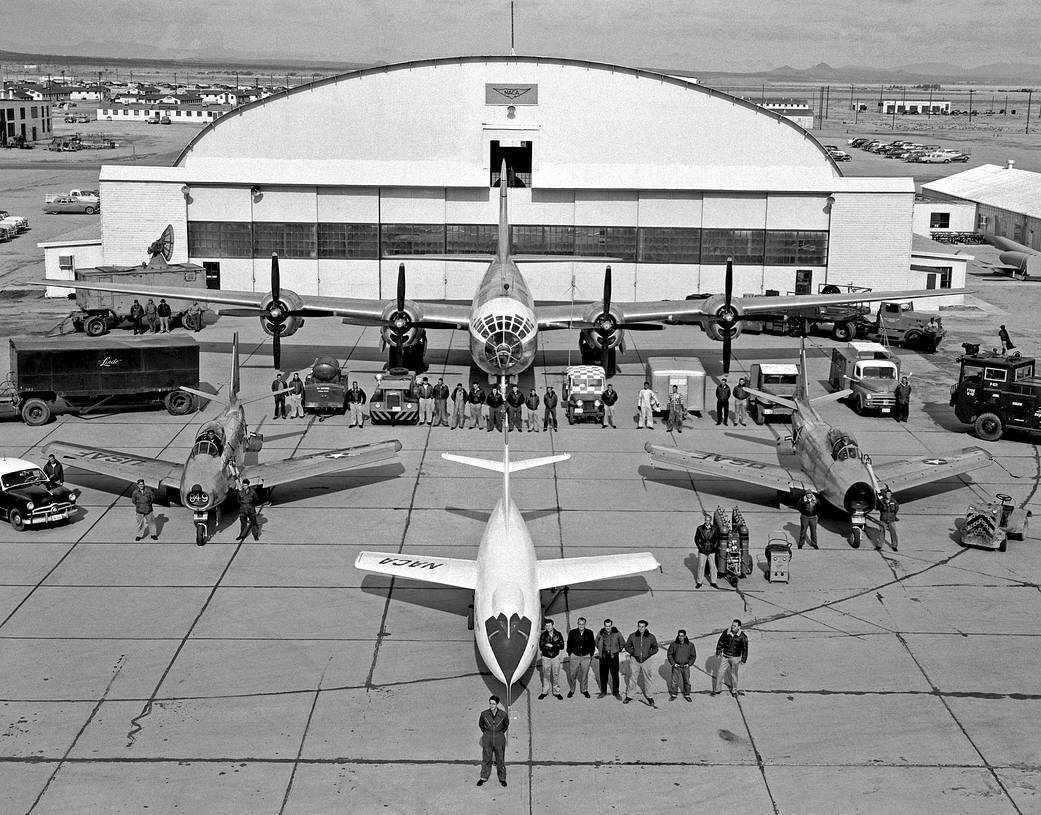E-1152
These crews supported the flight of the NACA D-558-II Skyrocket at the High-Speed Flight Station at South Base, Edwards AFB. Note the two Sabre chase planes, the P2B-1S launch aircraft, and the profusion of ground support equipment, including communications, tracking, maintenance, and rescue vehicles. Research pilot A. Scott Crossfield stands in front of the Skyrocket.
Three D-558-II Skyrockets were built by Douglas Aircraft, Inc. for the NACA and the Navy. The mission of the D-558-II program was to investigate the flight characteristics of a swept-wing aircraft at high supersonic speeds. Particular attention was given to the problem of “pitch-up,” a phenomenon often encountered with swept-wing configured aircraft. The D-558-II was a single-place, 35-degree swept-wing aircraft measuring 42 feet in length. It was 12-feet, 8-inches high and had a wingspan of 25 feet. Fully fueled it weighed from about 10,572 to 15,787 lb depending on configuration.
The first of the three D-558-IIs had a Westinghouse J34-40 jet engine and took off under its own power. The second was equipped with a turbojet engine replaced in 1950 with a Reaction Motors Inc., LR8-RM-6 rocket engine. This aircraft was modified so it could be air-launched from a P2B-1S (Navy designation for the B-29) carrier aircraft. The third Skyrocket had the jet engine and the rocket engine but was also modified so it could be air-launched. The jet engine was for takeoff and climbing to altitude and the four-chambered rocket engine was for reaching supersonic speeds. The rocket engine was rated at 6,000 pounds of thrust.
The D-558-II was first flown on Feb. 4, 1948, by John Martin, a Douglas test pilot. A NACA pilot, Scott Crossfield, became the first person to fly faster than twice the speed of sound when he piloted the D-558-II to its maximum speed of 1,291 miles per hour on Nov. 20, 1953. Its peak altitude, 83,235 feet, a record in its day, was reached with USMC Lt. Col. Marion Carl behind the controls.1952
NASA Photo
2 min read




























